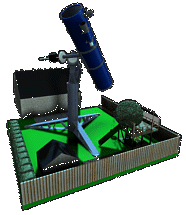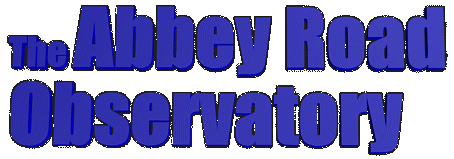 |
 |
|
Filter Research |
Go back to HOMEPAGE
 |
 |
|
Filter Research |
Go back to HOMEPAGE
|
Using Deep-Sky (Band Pass) Filters Before you can decide what deep-sky filter is best, and how best to use it, you have to ask yourself a number of questions:
The answer to these four questions will help you decide what filter or filters are best for you. I had to answer the same questions before I purchased my deep-sky filters. I'll share my answers and the filter choices I made with you a little later. Right now lets look at some of the additional information that I used to help me make my decision. Type of Objects: The type of objects you want to observe will have an impact on what filter is best for the task. The wavelengths at which an object emits light has an obvious link to how the view of that object is affected by the different filters. The nature of the light that we see through our telescope is that it has either been emitted or reflected from the object we are viewing. The most obvious source of light that we see is star light. Star light, and the light from objects that are visible due to reflected star light (eg. moons, planets, asteriods, reflection nebulae, star clusters, galaxies) tends to have a broad spectrum with no obviously dominant wavelength. Light can also be emitted directly from clouds of ionized gas such as from emission nebulae, planetary nebulae, and supernova remnants. Light emitted from these sources is at discrete and very specific wavelengths due to the way the light is generated (Google "quantum theory of light" to learn how this works). This is perhaps a good opportunity to finally explain the vertical dashed lines on my spectral response graphs. Table 6 below summarises the list of emission wavelengths that are desirable and undesirable from the astronomer's perspective. The vertical lines in my graphs correspond to these desirable and undesirable wavelengths.
Table 6 Summary of Desirable & Undesirable Wavelengths for Astronomy Deep-sky filters take advantage of the fact that the desirable and undesirable wavelengths do not coincide with each other, allowing for a filter to be made that allows all of the desirable but none of the undesirable wavelengths through to your eye. The result is darkening of everything in your eyepiece view except the desirable emission wavelengths. This works great for emission nebulae, planetary nebulae, and supernova remnants, but what about everything else? Some manufacturers and users have stated that certain types of deep-sky filter can enhance the visibility of deep-sky objects like galaxies and clusters too. I have no experience myself to say whether or not this is true. Based on my research plus my own limited experience, I have prepared a table that lists the recommended applications for each of my 11 filter categories.
Table 7 Deep-Sky Filter Application By Filter Category You will note in Table 7 that I don't recommend the use of O-III Group B and H-beta Group B for visual use. The bandwidths and %transmissivities for these filters are very small, making them best suited to CCD imaging applications. Clearly the most common application of deep-sky filters is the observation of emission-type objects. David Knisely did a pretty exhaustive visual survey of different nebula types using a variety of Lumicon brand filters. The end result was a list of filter recommendations for different nebulae. His results are summarised below in Table 8, but with my filter categories substituted.
Table 8 Recommended Filter For Use With Particular Nebulae Type of Telescope: The type of telescope you use can also affect how useful the different deep-sky filters are to you. The primary parameter of concern is aperture. Deep-sky filters can attenuate a large percentage of the light coming through your telescope, making some limited to use only on larger aperture telescopes. Table 9 below summarizes the recommended minimum telescope apertures for the 11 filter categories. I used the aperture recommendations from various filter manufacturers (primarily Astronomik) to come up with my own relationship between scotopic %transmissivity and telescope aperture.
Table 9 Minimum Recommended Aperture By Filter Category Now don't assume if you use a filter on an aperture smaller than recommended above that you won't see any improvement in your view, because you will. The recommended apertures are just what is needed to get the best performance out of your filter. Another way to look at the issue of pairing a filter to a telescope is to consider the exit pupil size. The exit pupil size is calculated by dividing your eyepiece focal length by your telescope's focal ratio. For example: a 26mm eyepiece on an f/10 telescope would have an exit pupil diameter of 2.6mm. Lumicon has a table on their filter webpage recommending exit pupil size ranges for their various filters. I have reproduced that table below.
Table 10 Recommended Exit Pupil Size For Lumicon Filters Other than having sufficient aperture, and picking the right focal length eyepiece, there really is no limit that I can find on what type of telescope you can use deep-sky filters on. Well, actually I guess there is one thing: band pass filters can have poorer performance on low focal ratio telescopes. I believe that this is generally true of all telescope accessories, and has something to do with the fact that light from the outer edge of the objective is passing through the filter at a significantly different angle than from the the center of the objective. Testing by others (see the work done by Christian Buil) shows that a filter's pass band wavelengths shift with the angle of the filter relative to the incident light. This effect is used constructively in the fancy (ie. expensive) tunable H-alpha filters used for Sun observing. The result for deep-sky filters on low focal ratio telescopes is a non-uniform view over the filter area. Some web reviews I've found suggest that this effect is worsened when using lower quality filters. Observing Location: Ahh if only we had a time machine, that we could jump into and go back 100 years or so for our evening's observing session. Back then you'd only have to go a short wagon ride to get to where the light pollution was basically zero. The sad reality is that the majority of amateur astronomers are forced to do their observing from urban or sub-urban environs. Sure we may get to go on the odd road trip to a dark sky sight, but if any of us plan on observing with any regularity we will have to learn to accept our light polluted backyards for what they are. To give you an idea of we astronomers are having to deal with, I have put together a composite map of Southeastern Ontario region where I live and do my observing. The map overlays satelite light pollution data over the Google map for the region so you can see clearly what cities are generating the light pollution. I live in the white blob second from the right. Figure 14 Light Pollution Map for Eastern Ontario, Canada With this reality in mind it is easy to understand why there is such a large variety of deep-sky filters available to choose from. So if you are like me, and you live in a large city where light pollution is high, you probably should consider an appropriate deep-sky filter if you want to have any hope of seeing nebulae from your backyard. If you live further outside a large city, the light pollution rejection capability of the filter you choose maybe doesn't need to be so much. If you are a lucky bum, and you live or can observe regularly from a dark sky sight, then you may not need a deepsky filter at all. For you dark-sky bums, you may want to at least consider that deep-sky filters can also improve your view of faint nebulae by reducing the brightness of other neigbouring objects like stars. Price: The one thing I did not include in my research is price. There are simply too many different suppliers out there for me to compile a list of price along with each filter's performance. That work you'll have to do for yourself. One piece of advice though is that in general, it seems that you get what you pay for; expensive filters tend to be the better performers. So what is a good performer? It is any filter with the following attributes:
There are a few other signs of good quality filters to look for such as: optically polished glass, anti-reflection coatings on both sides, and hard protective coatings for anti-scratch. Also, companies that provide you with a print-out of YOUR filter's factory measured spectral response is always a good sign of a quality manufacturer. My Choice: The answers to the initial four questions for me are:
It is my nature to explore, experiment, optimise...the engineer's curse! The choice that best meets my needs is a selection of high performance filters, from wide to narrow. This provides me with the largest flexibility, and the freedom to experiment and learn for myself what filters work the best on different objects for my circumstances. Figure 15 is an image of the filters I selected: Astro Hutech IDAS LPS-P2 (Multi Band, 72.7% trans), Baader Planetarium UHC-S (Wide Band, 54.7% trans), Astronomik UHC (Medium Band, 33.6% trans), Astronomik O-III (O-III A, 20.5% trans), and Astronomik H-beta (H-beta A, 12.6% trans). Figure 15 My Deep-Sky Filter Choices Well, that's it. I've said all I wanted to say, researched all I wanted to research, and tabularised all I wanted to tabularise. It is now time to get outside and do some observing! Thank you for listening. If you have any questions about my background material, please check out my References page, or contact me at jimmythepuker2@yahoo.ca. Cheers! |
||||||||||||||||||||||||||||||||||||||||||||||||||||||||||||||||||||||||||||||||||||||||||||||||||||||||||||||||||||||||||||||||||||||||||||||||||||||||||||||||||||||||||||||||||||||||||||||||||||||||||||||||||||||||||||||||||||||||||||||||||||||||||||||||||||||||||||||||||||||||||||||||||||||||||||||||||||||||||||||||||||||||||||||||||||||||||||||||||||||||||||||||||||||||||||||||||||||||||||||||||||||||||||||||||||||||||||||||||||||||
Go back to HOMEPAGE
Last updated: 07-Mar-12
|
Copyrights to all content from the webpages hosted here belongs to Jim Thompson. Nov. 2009. |